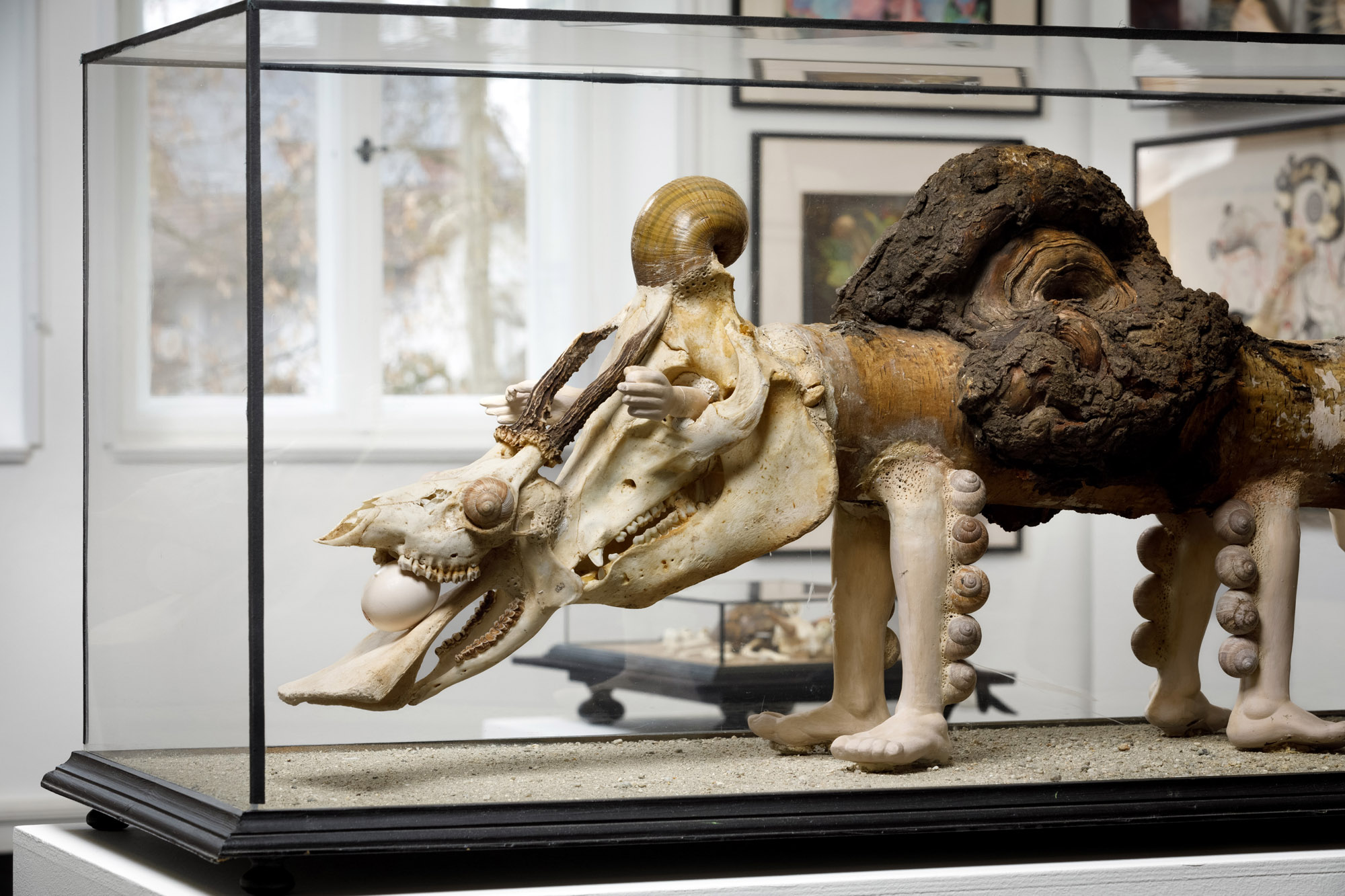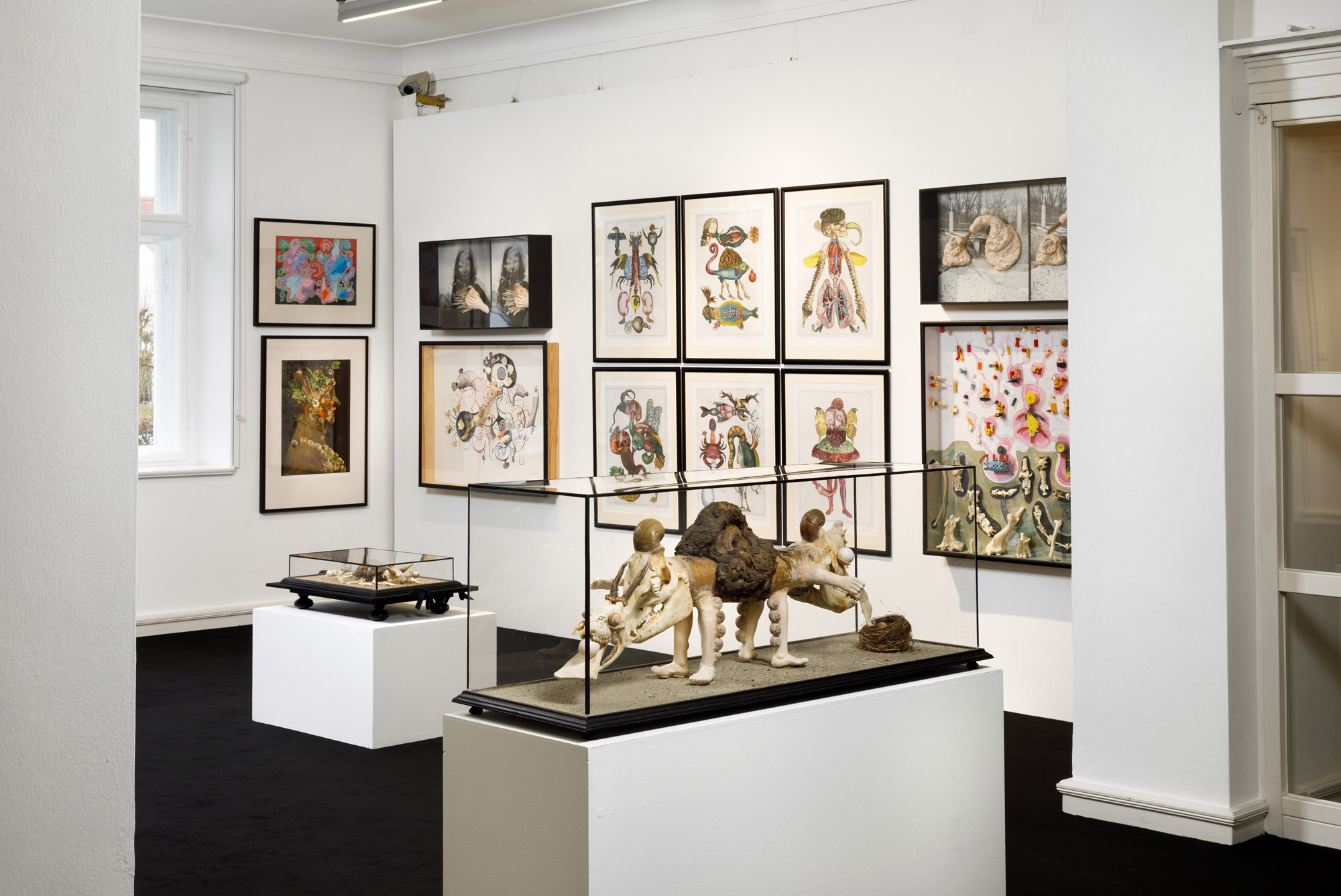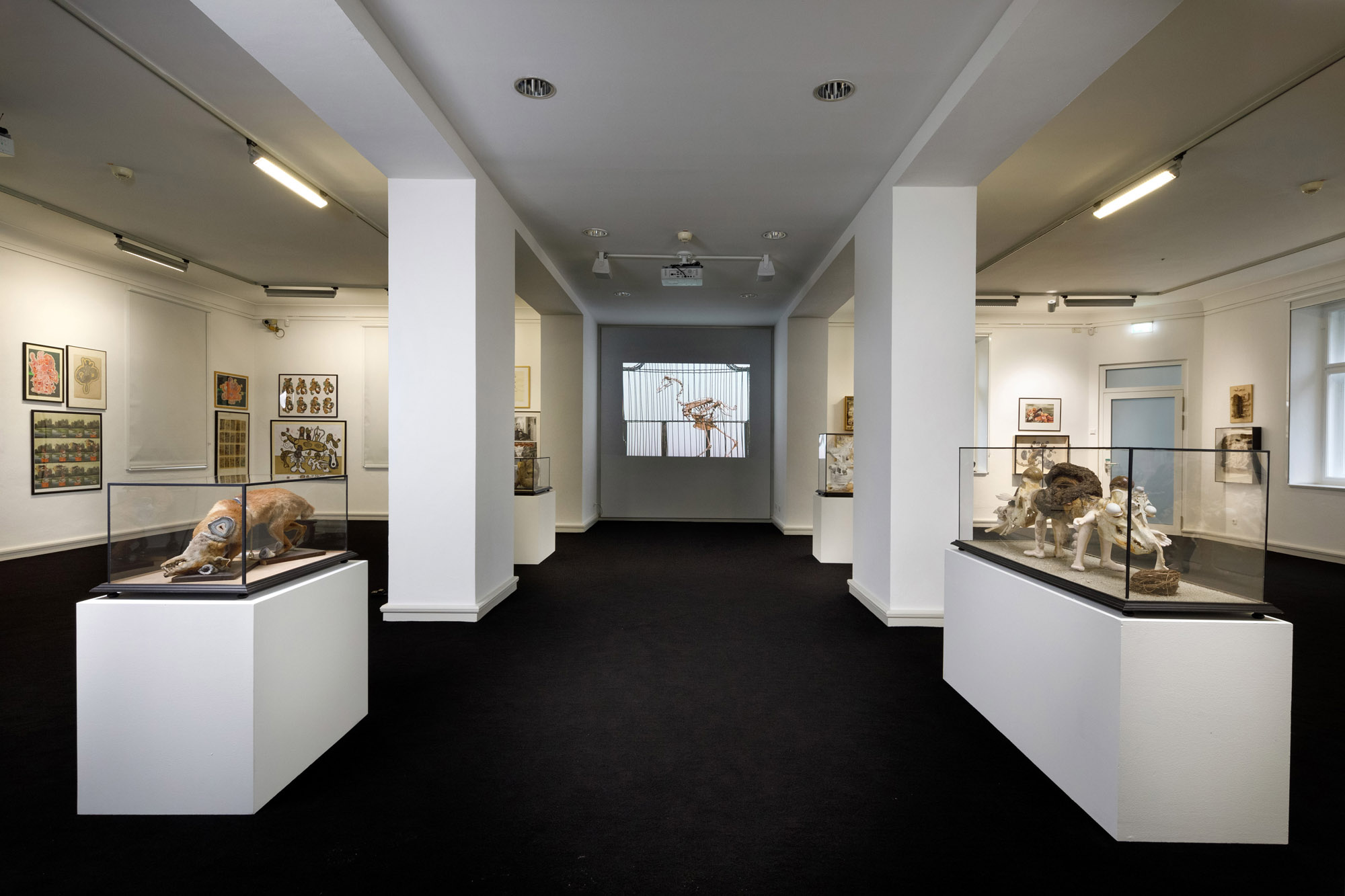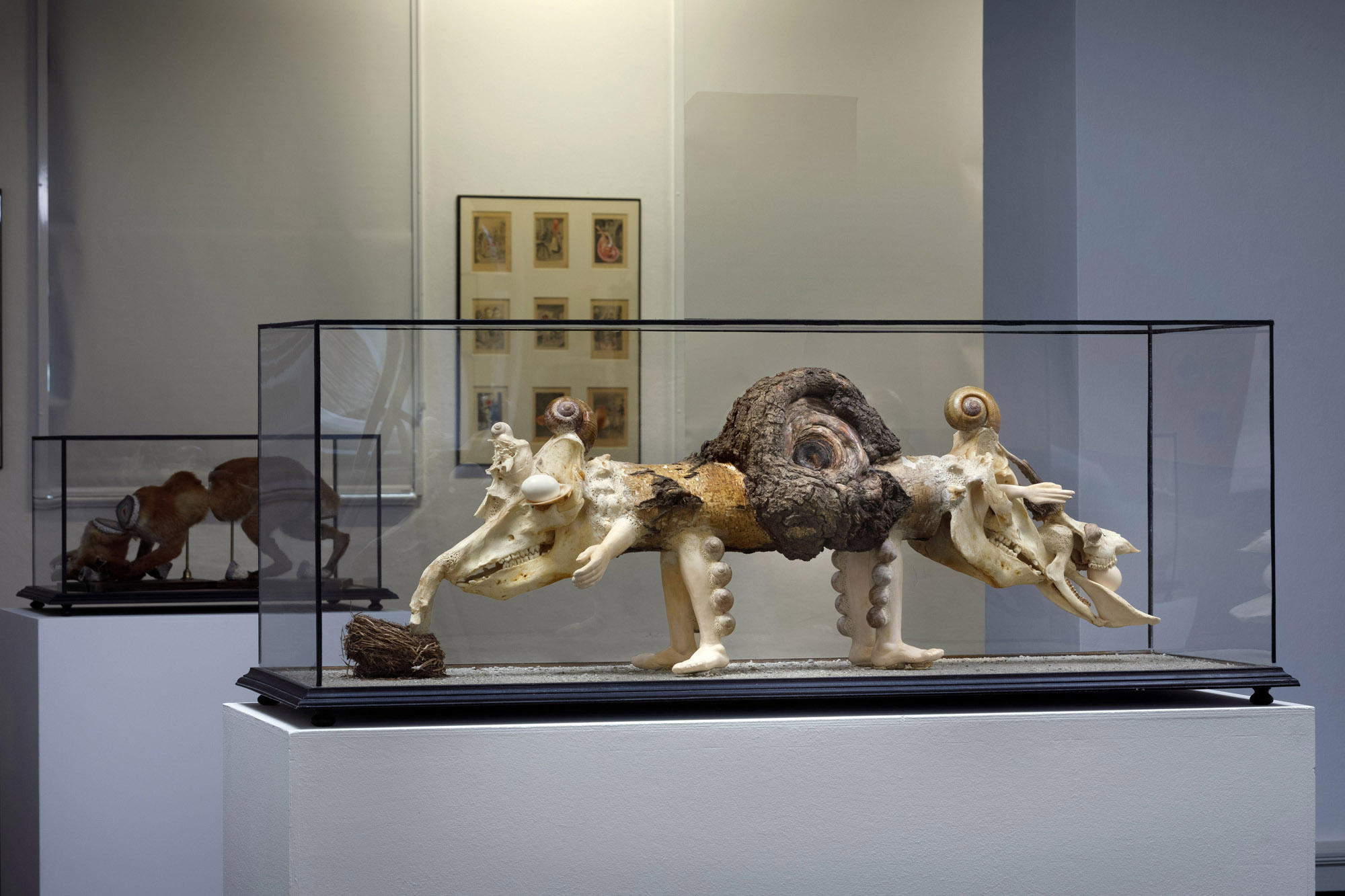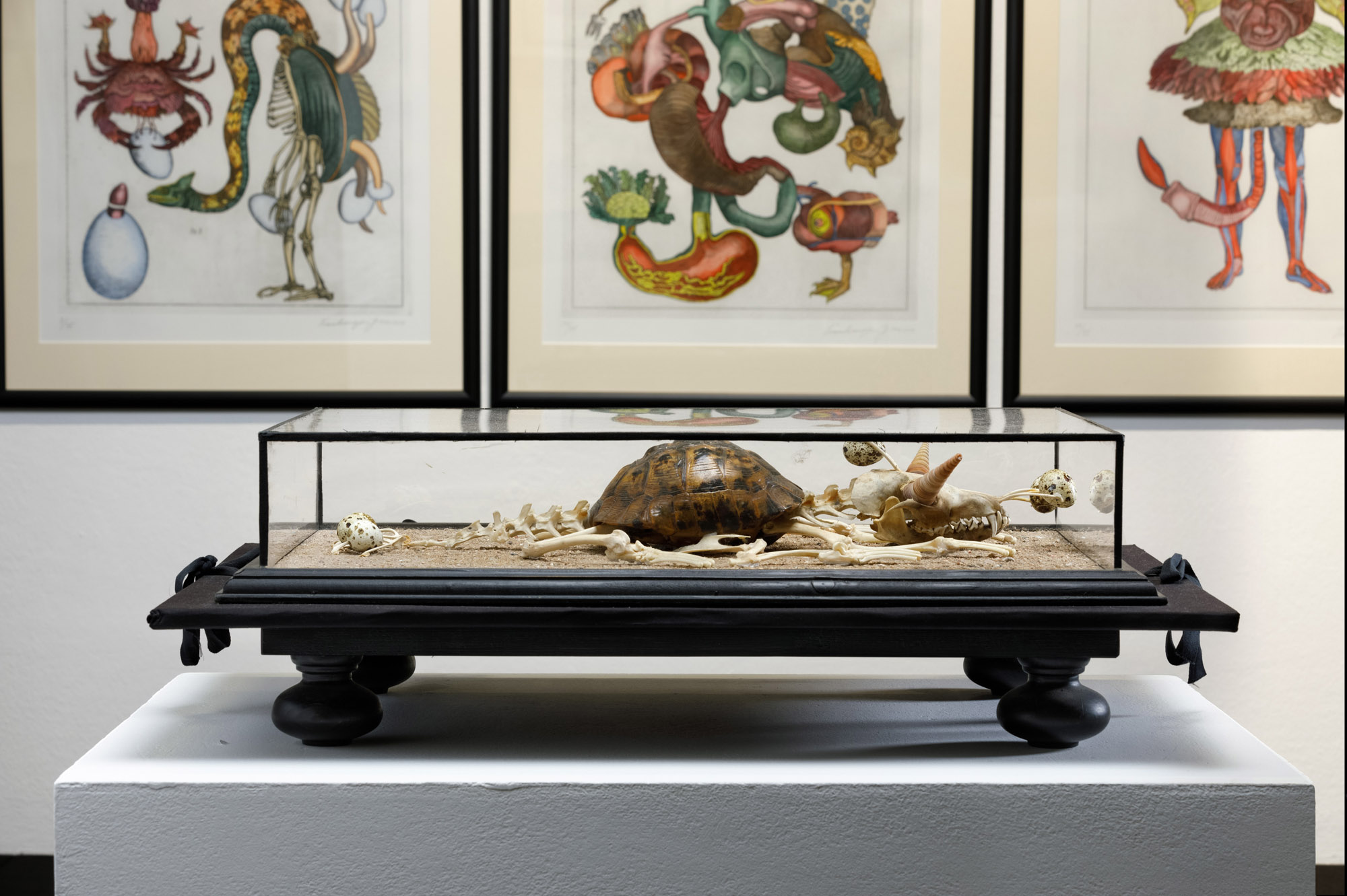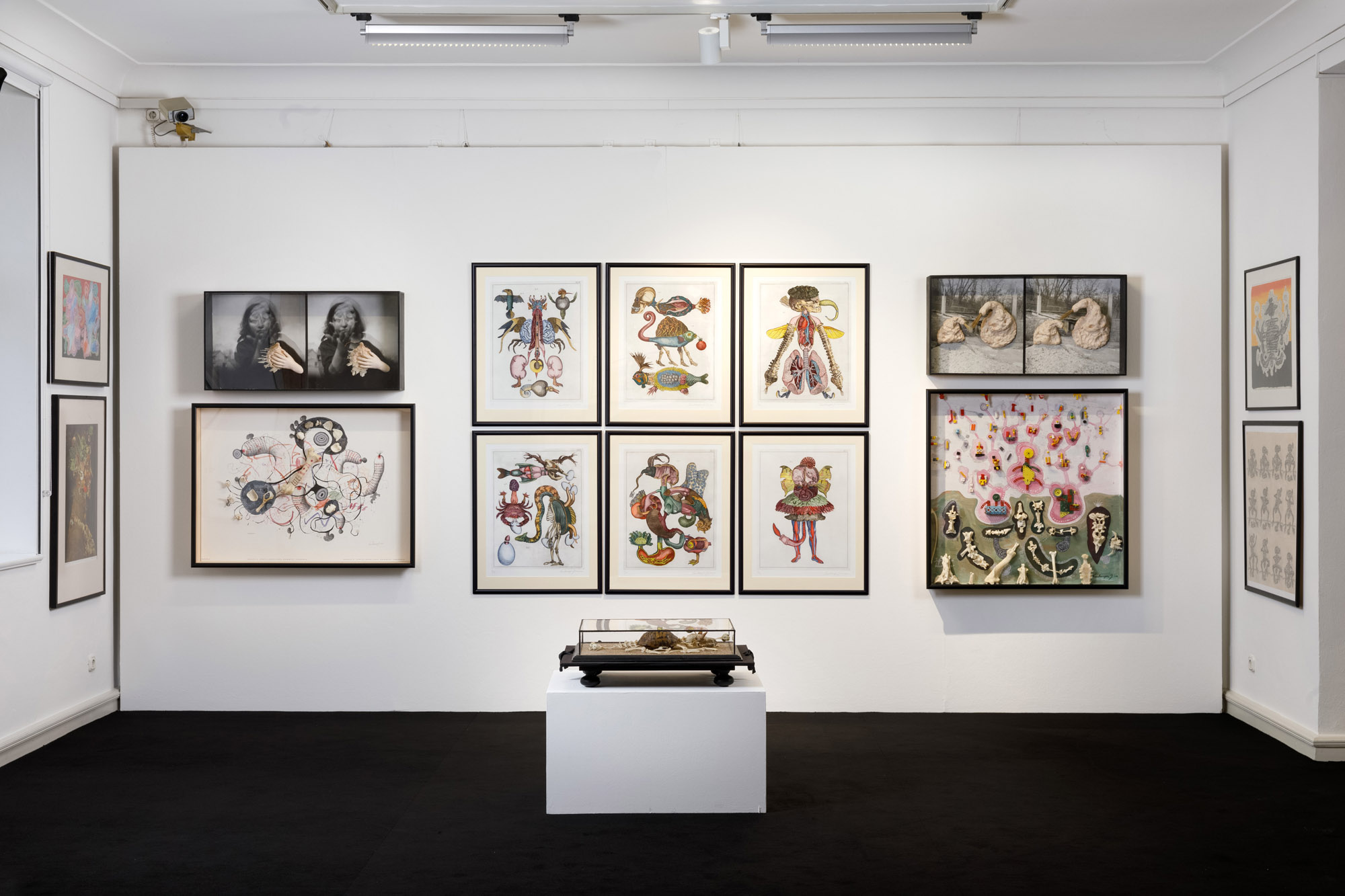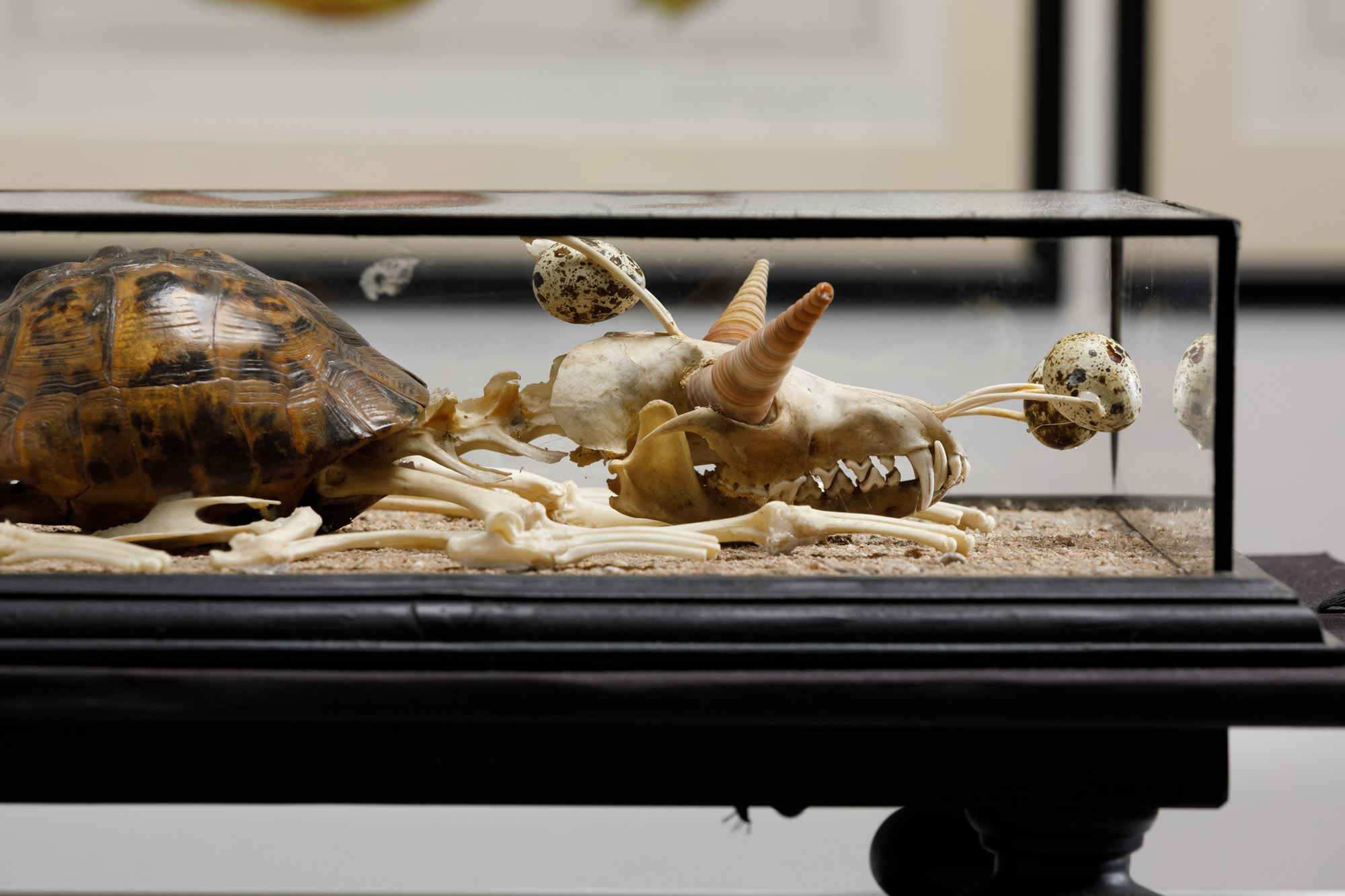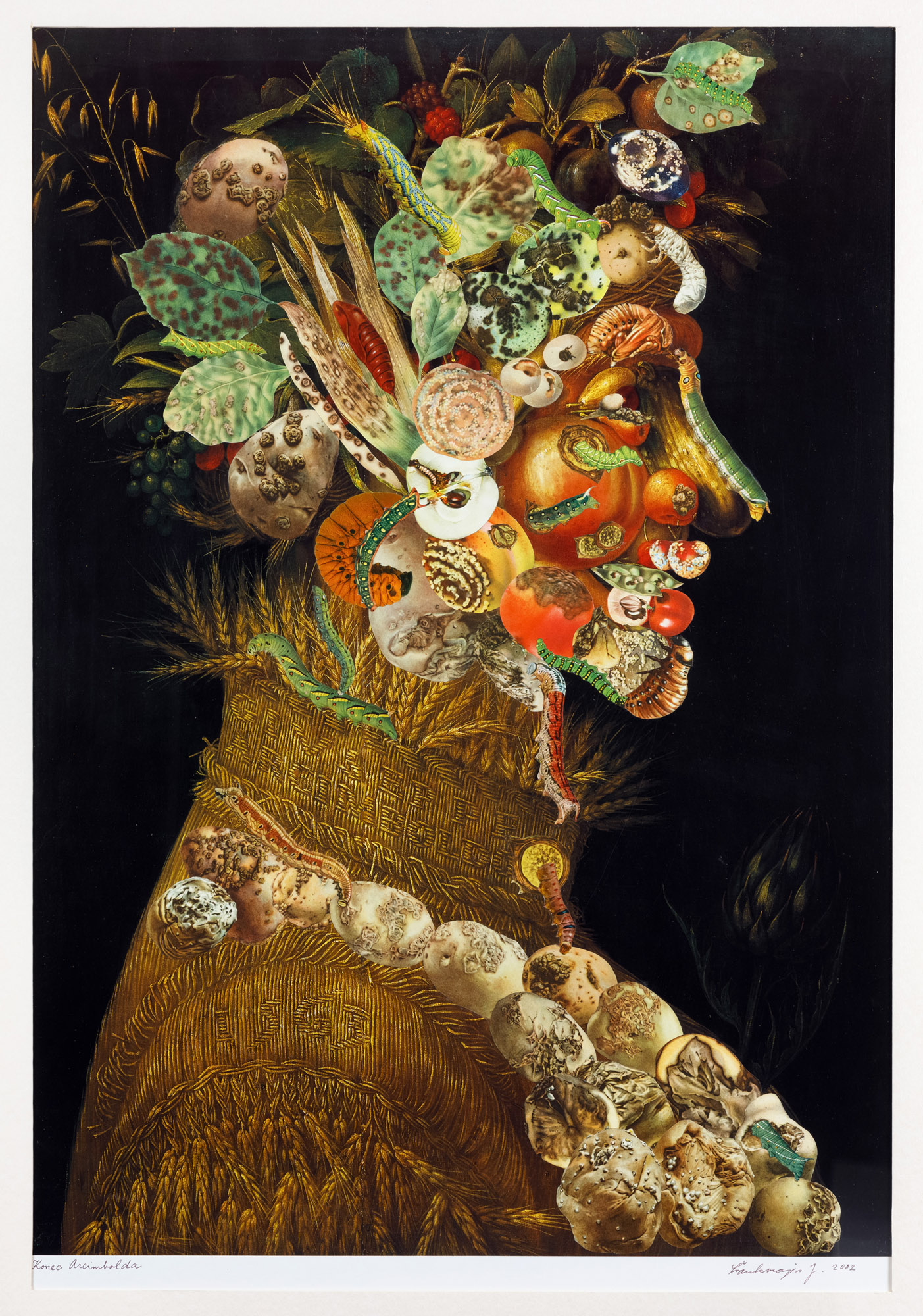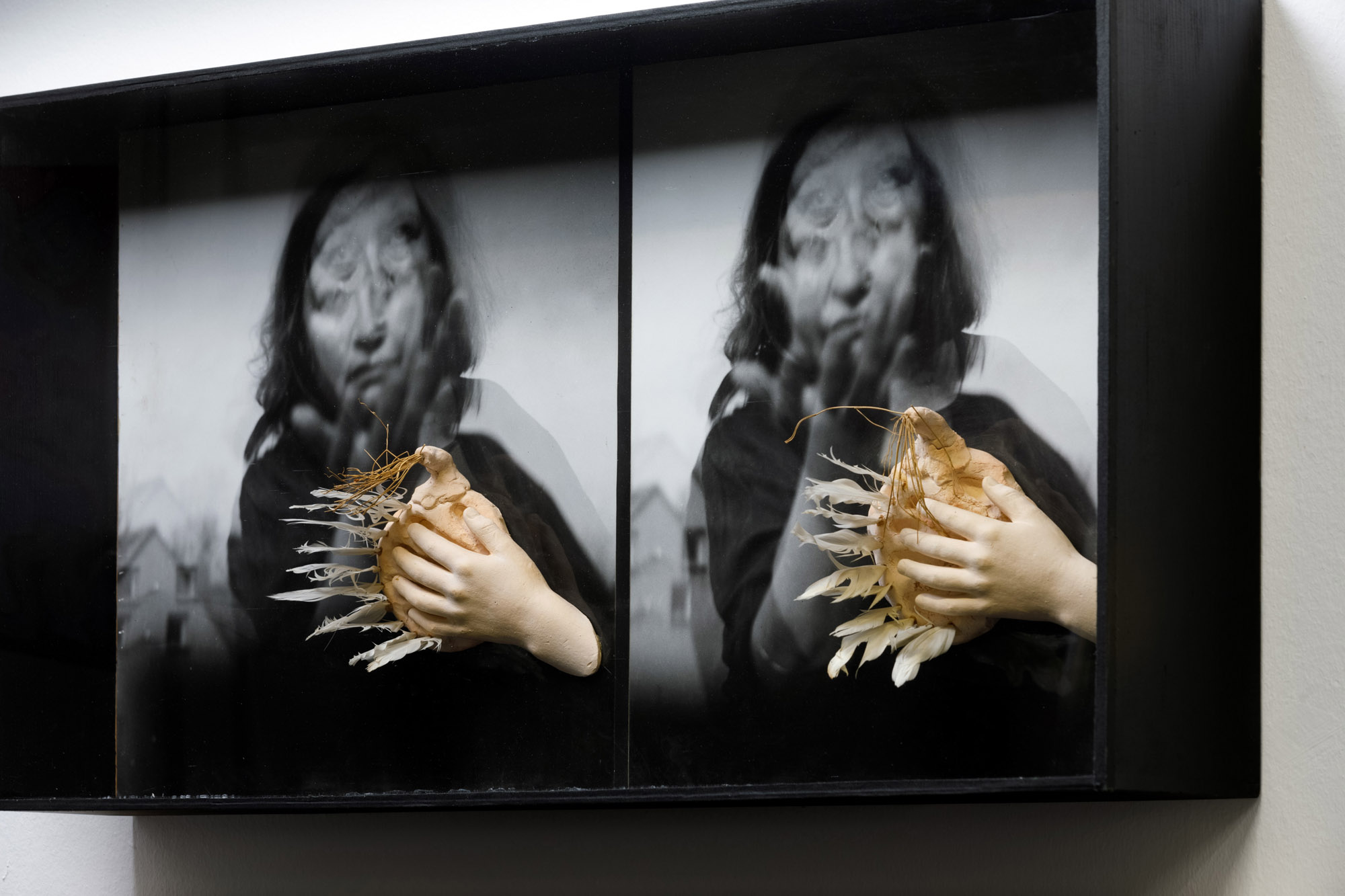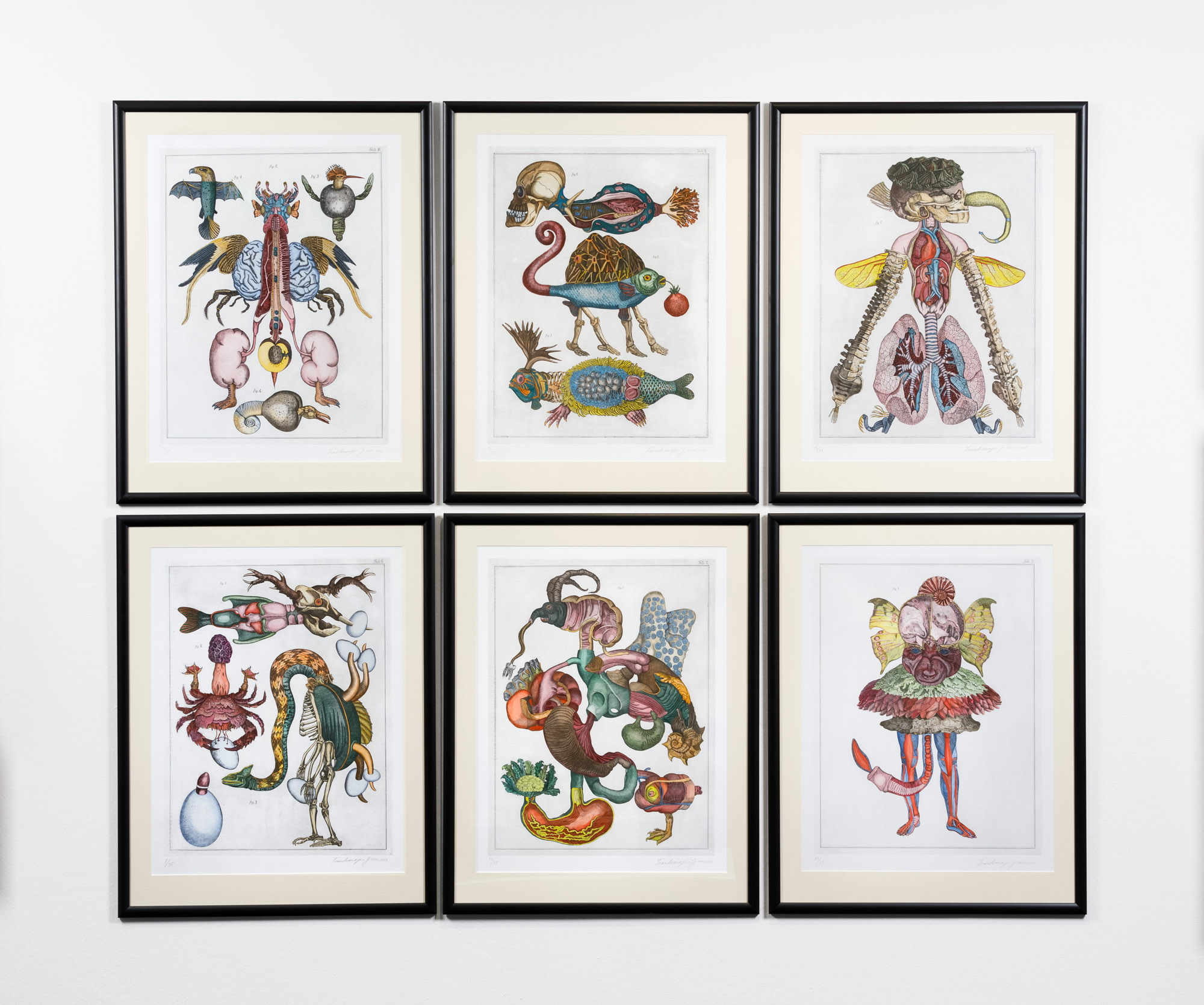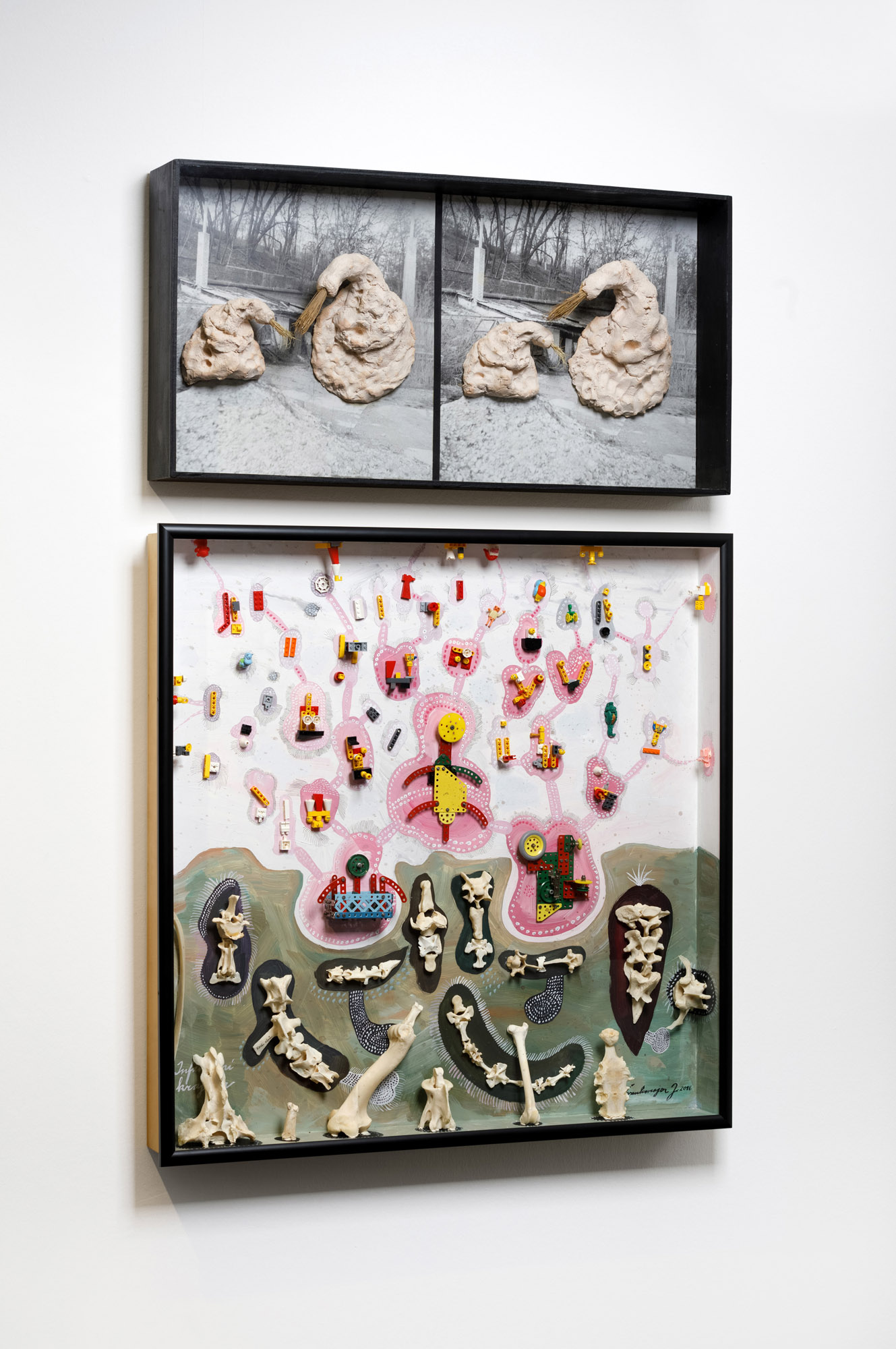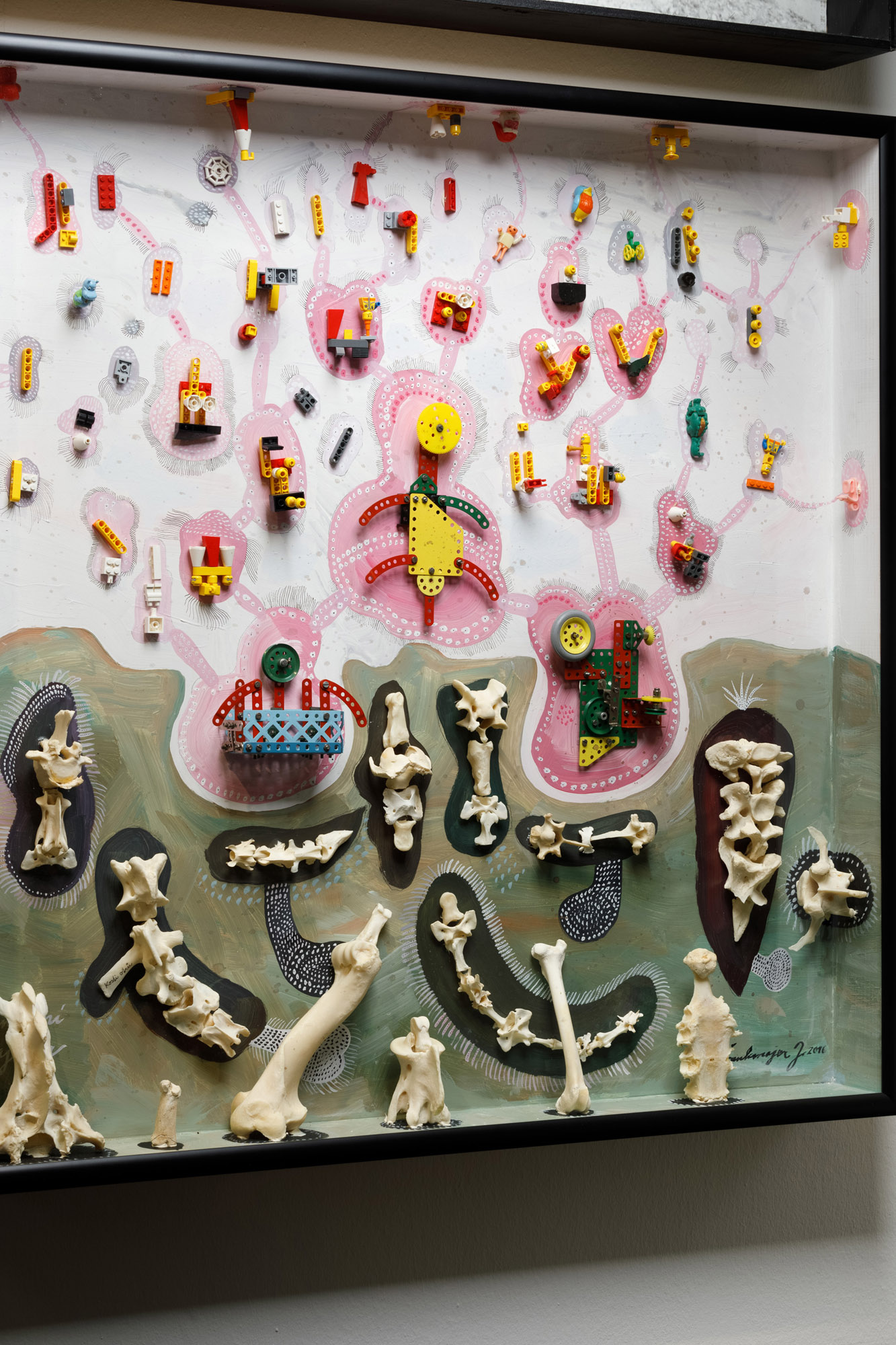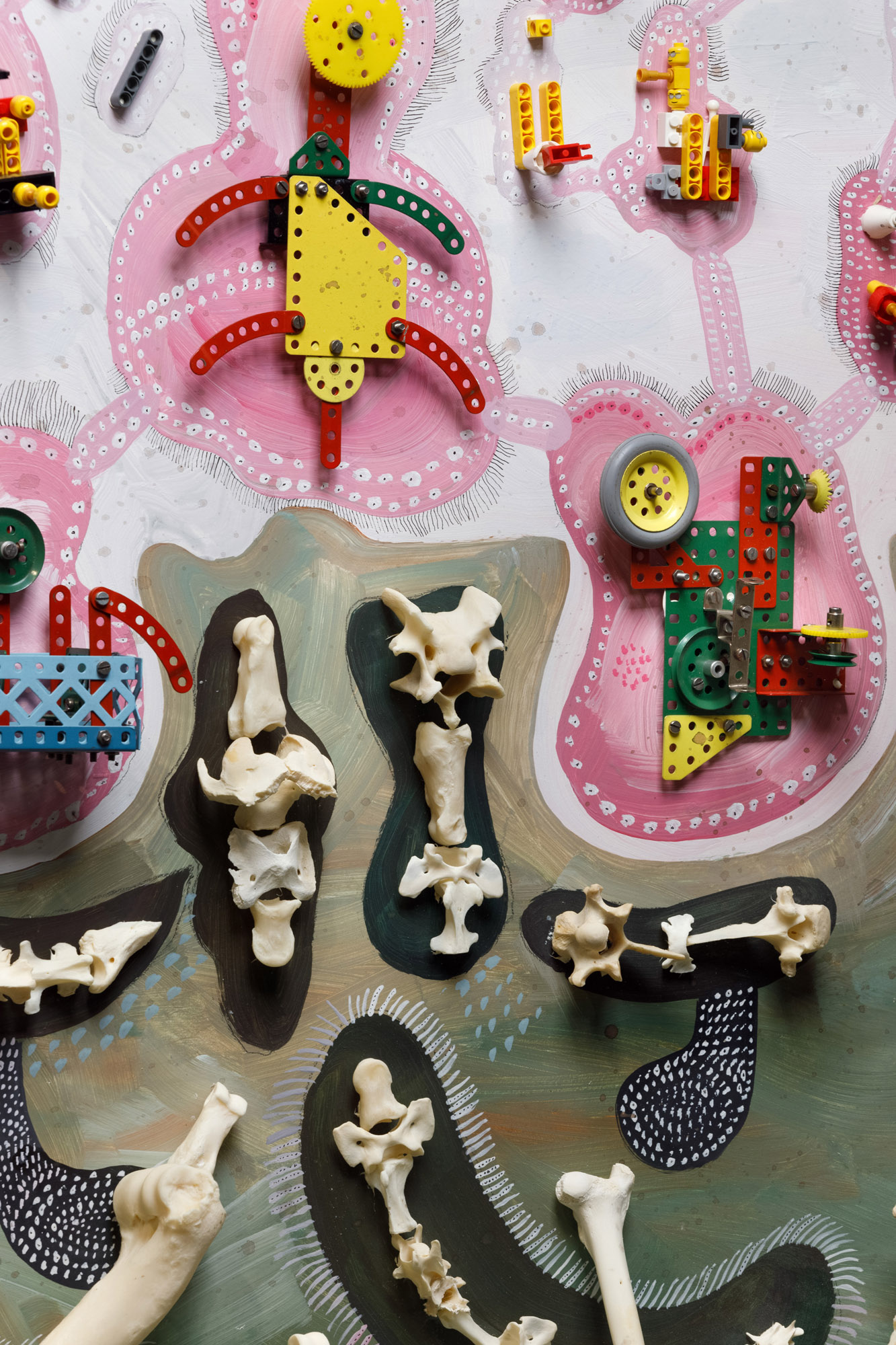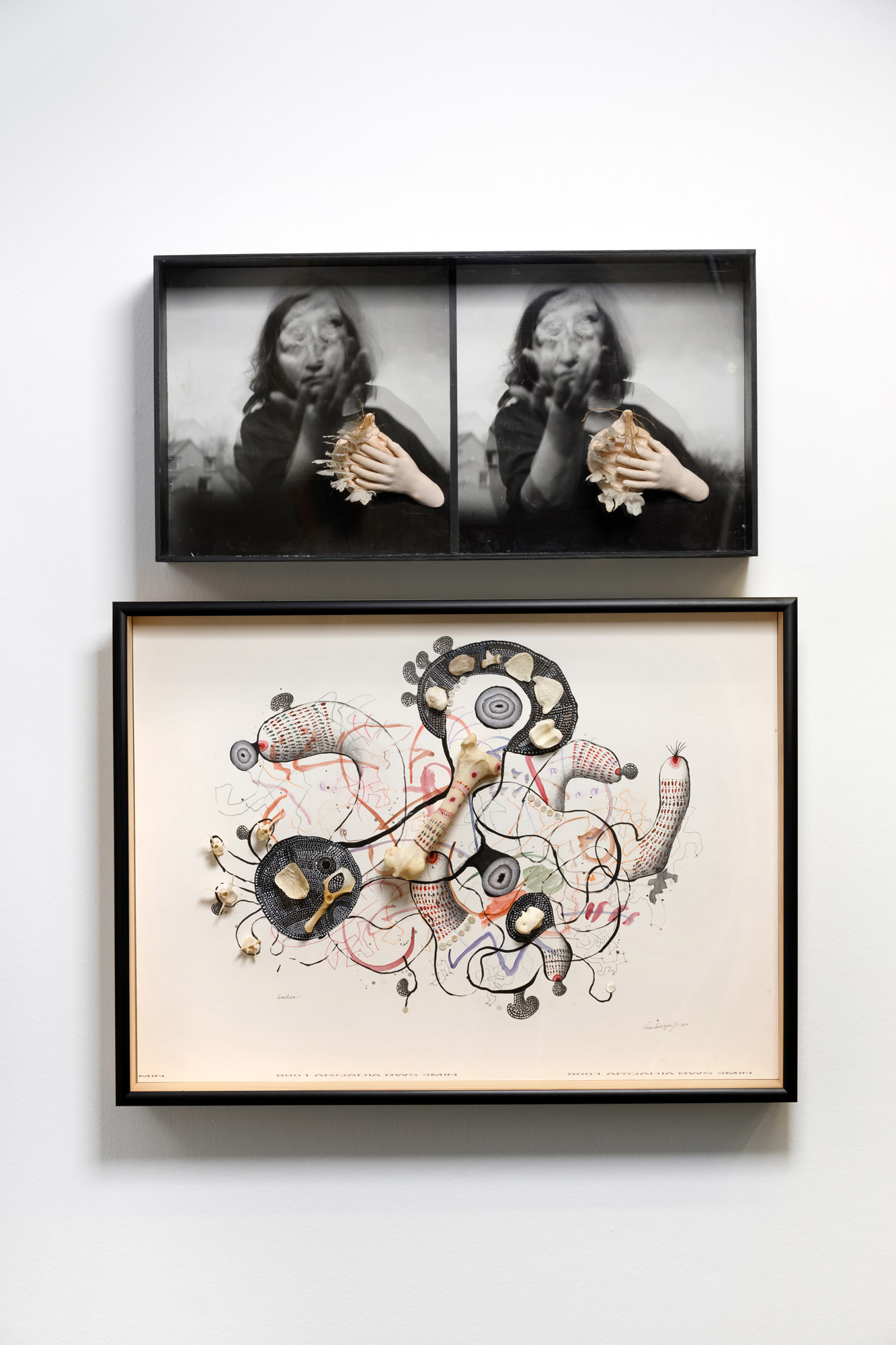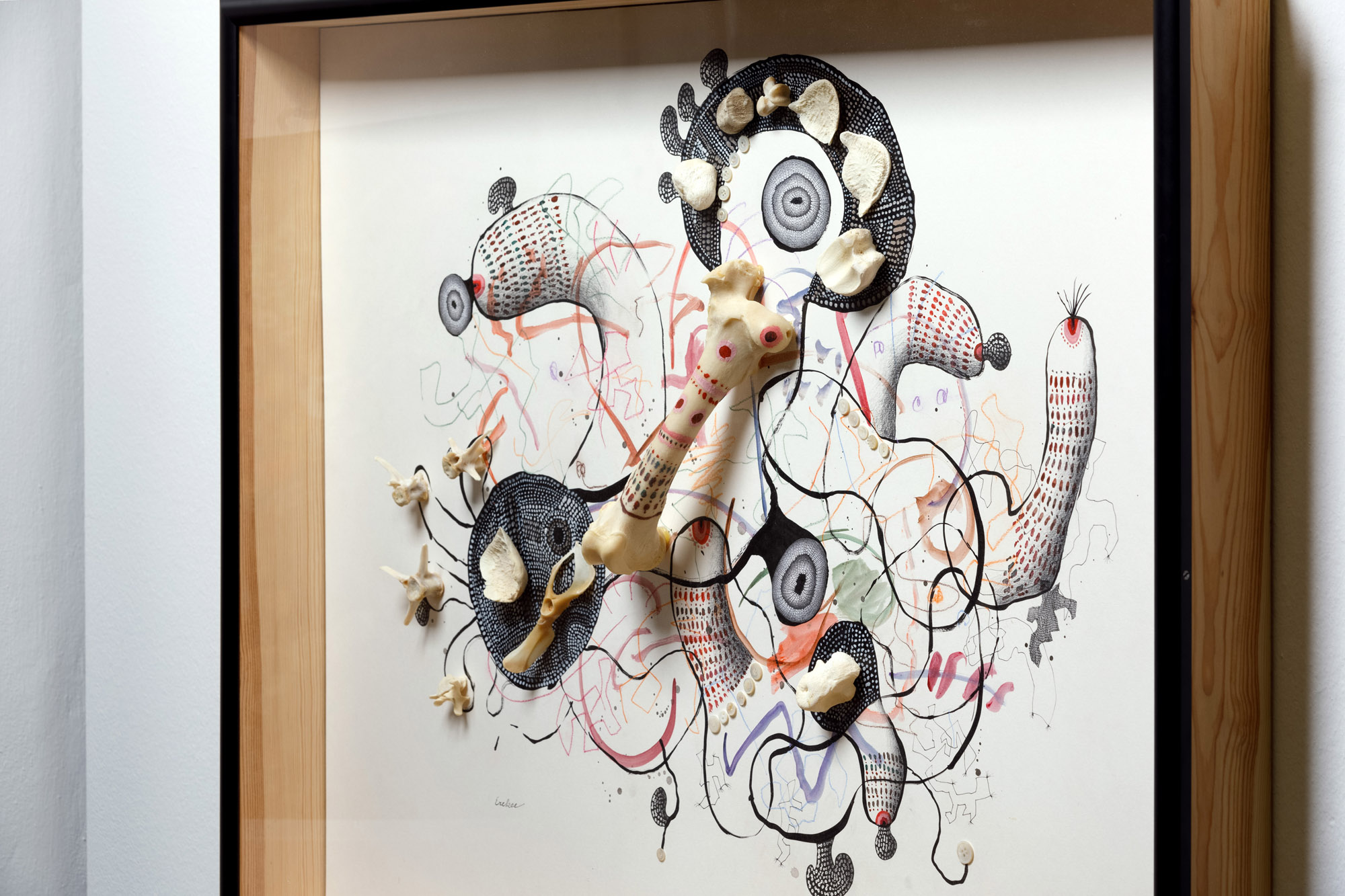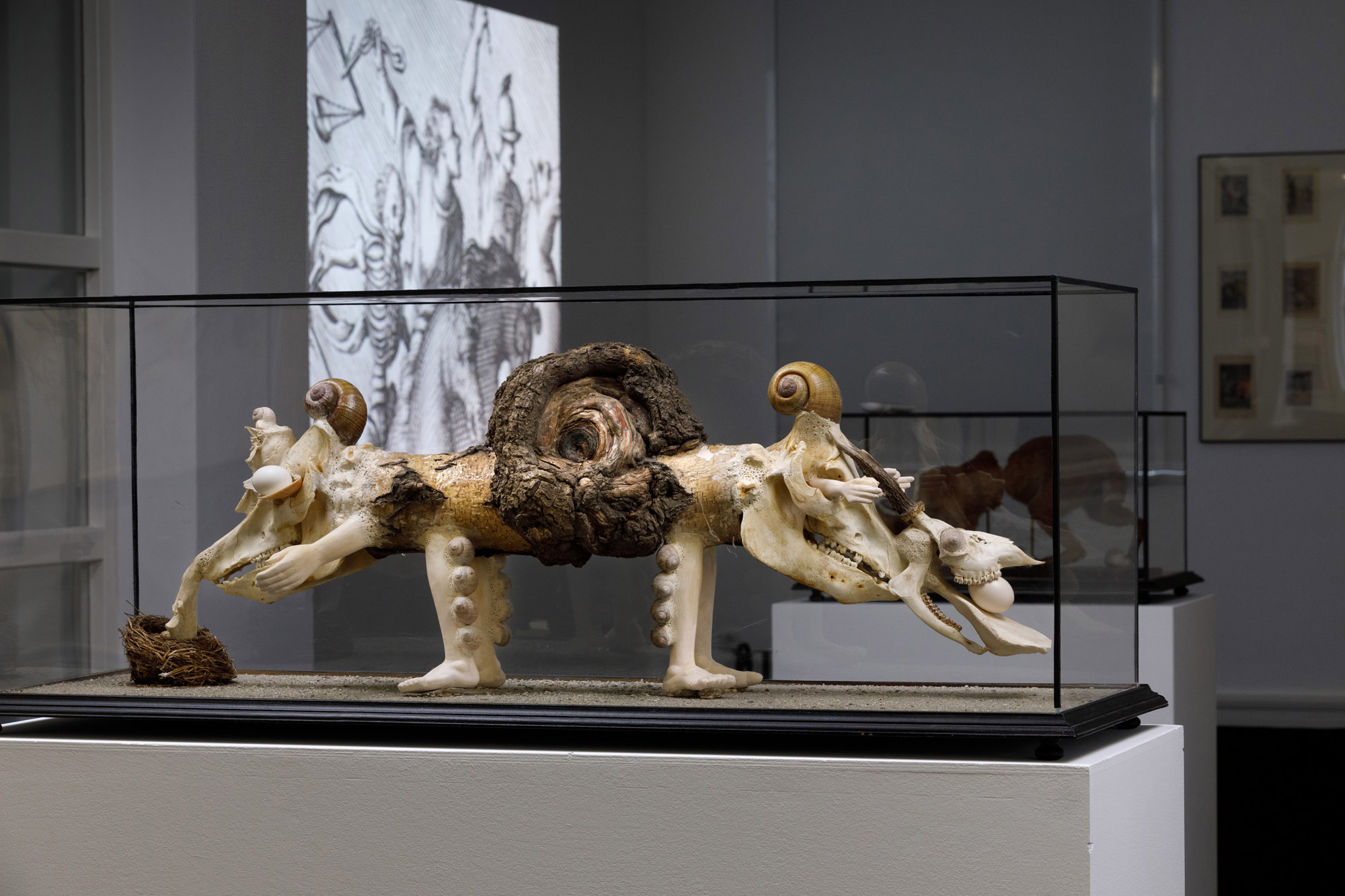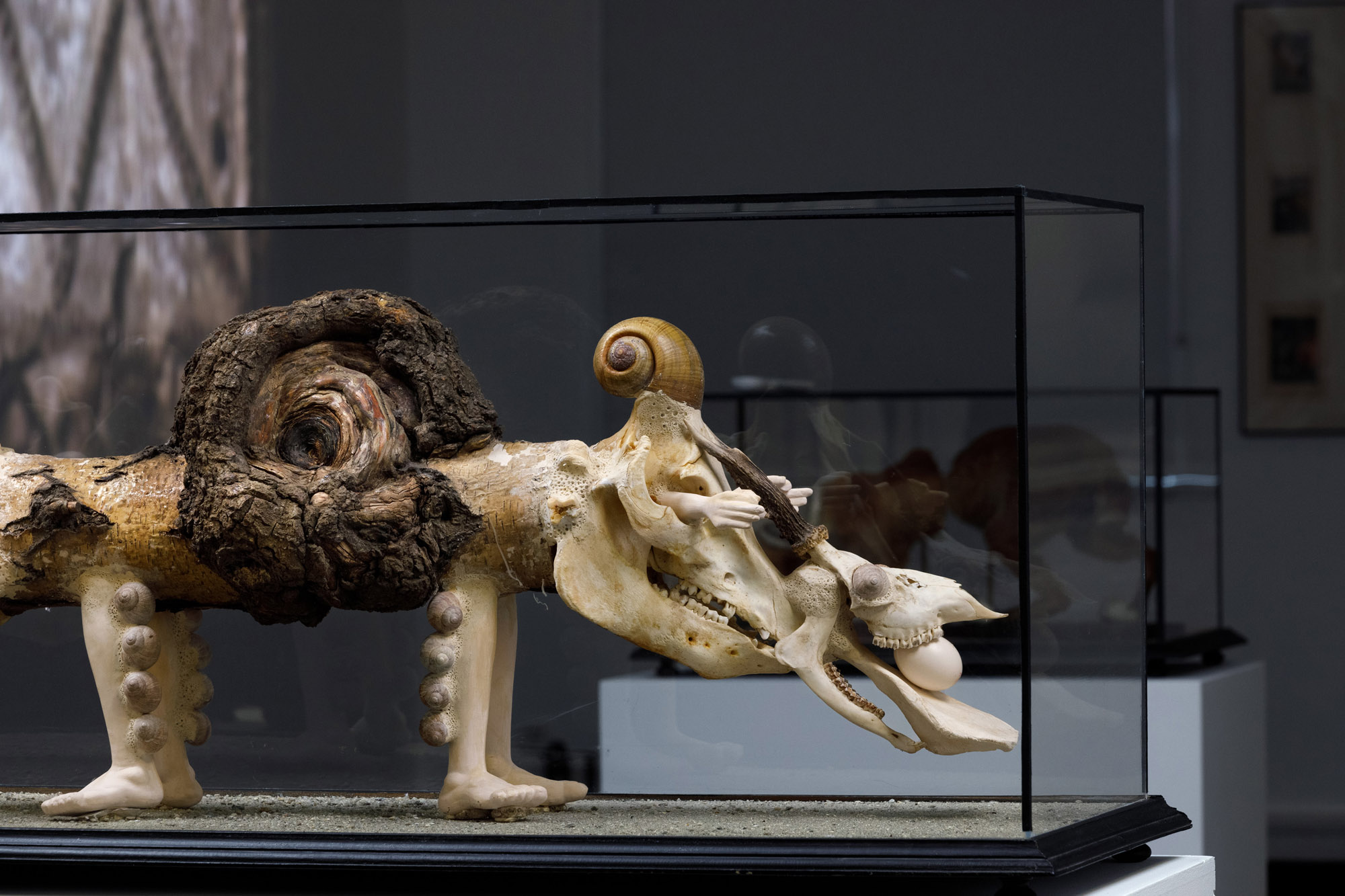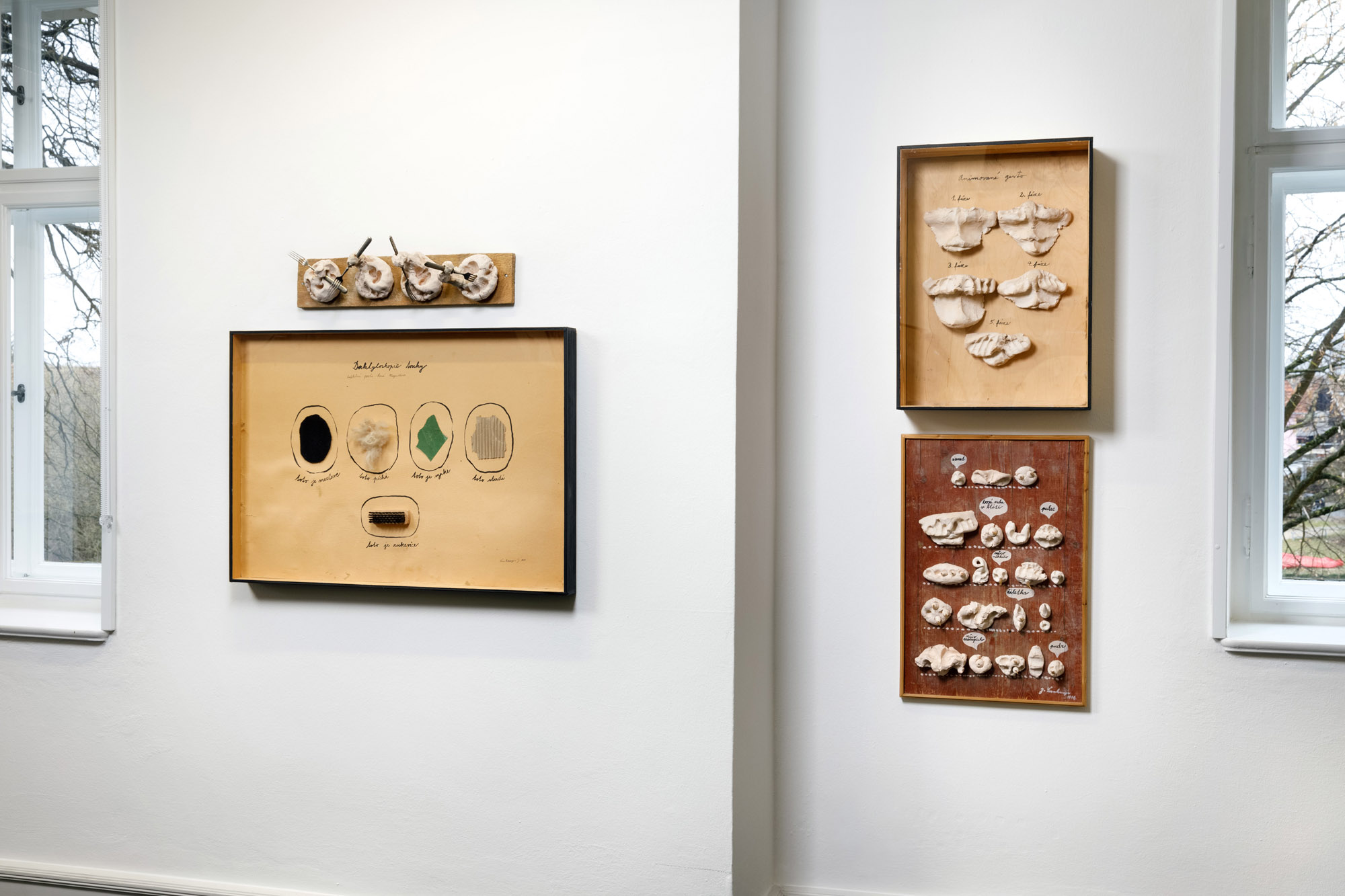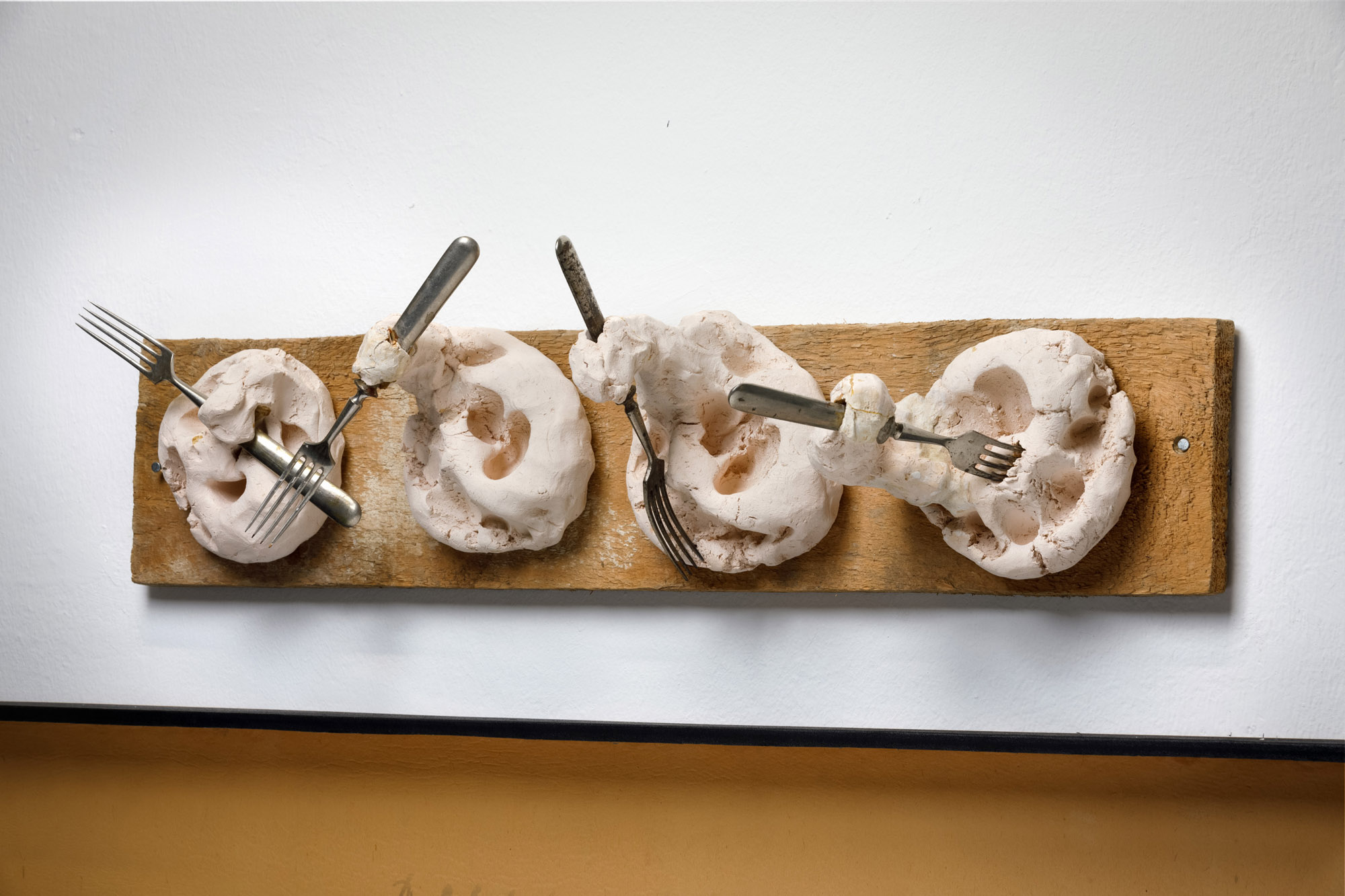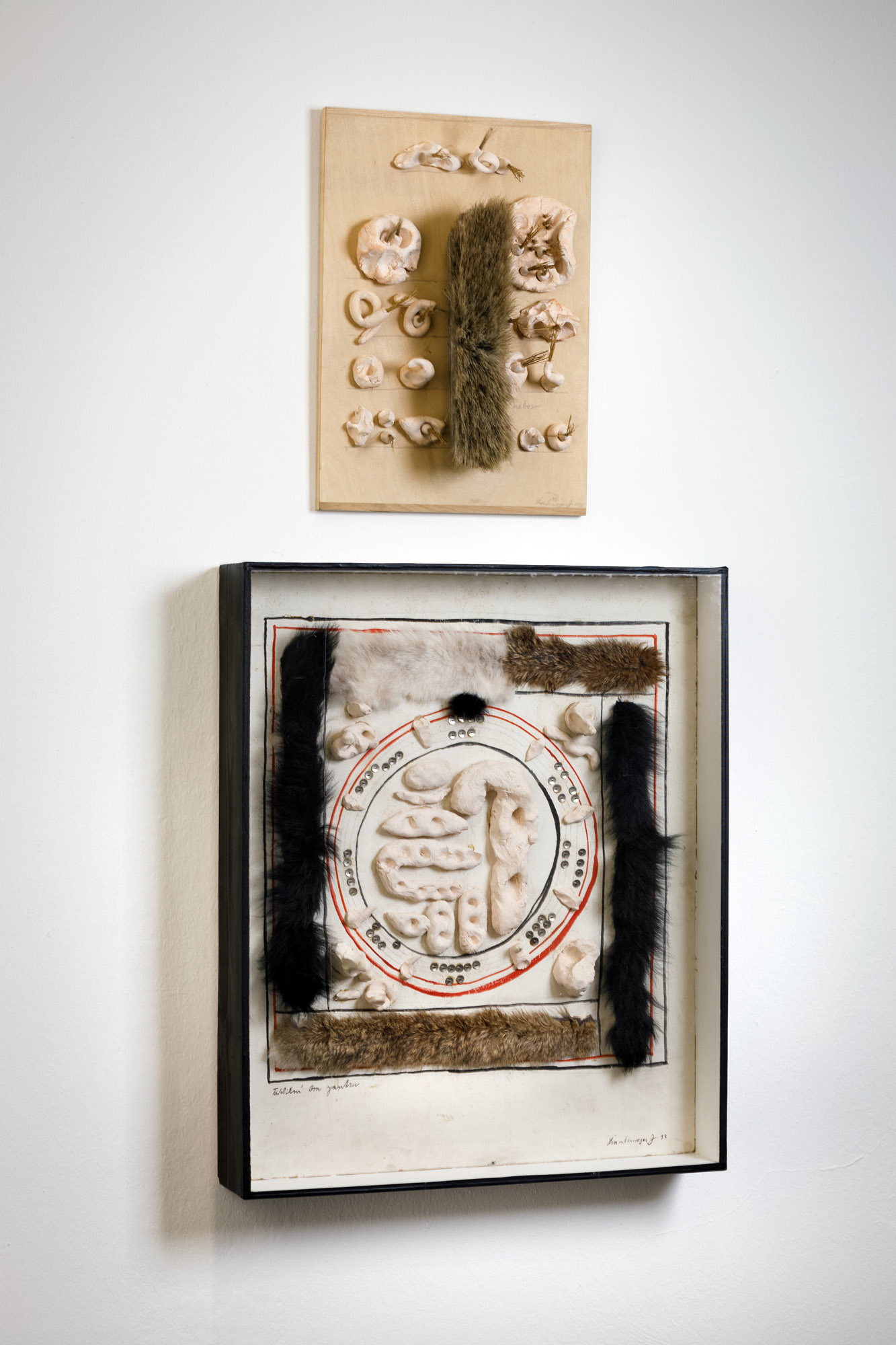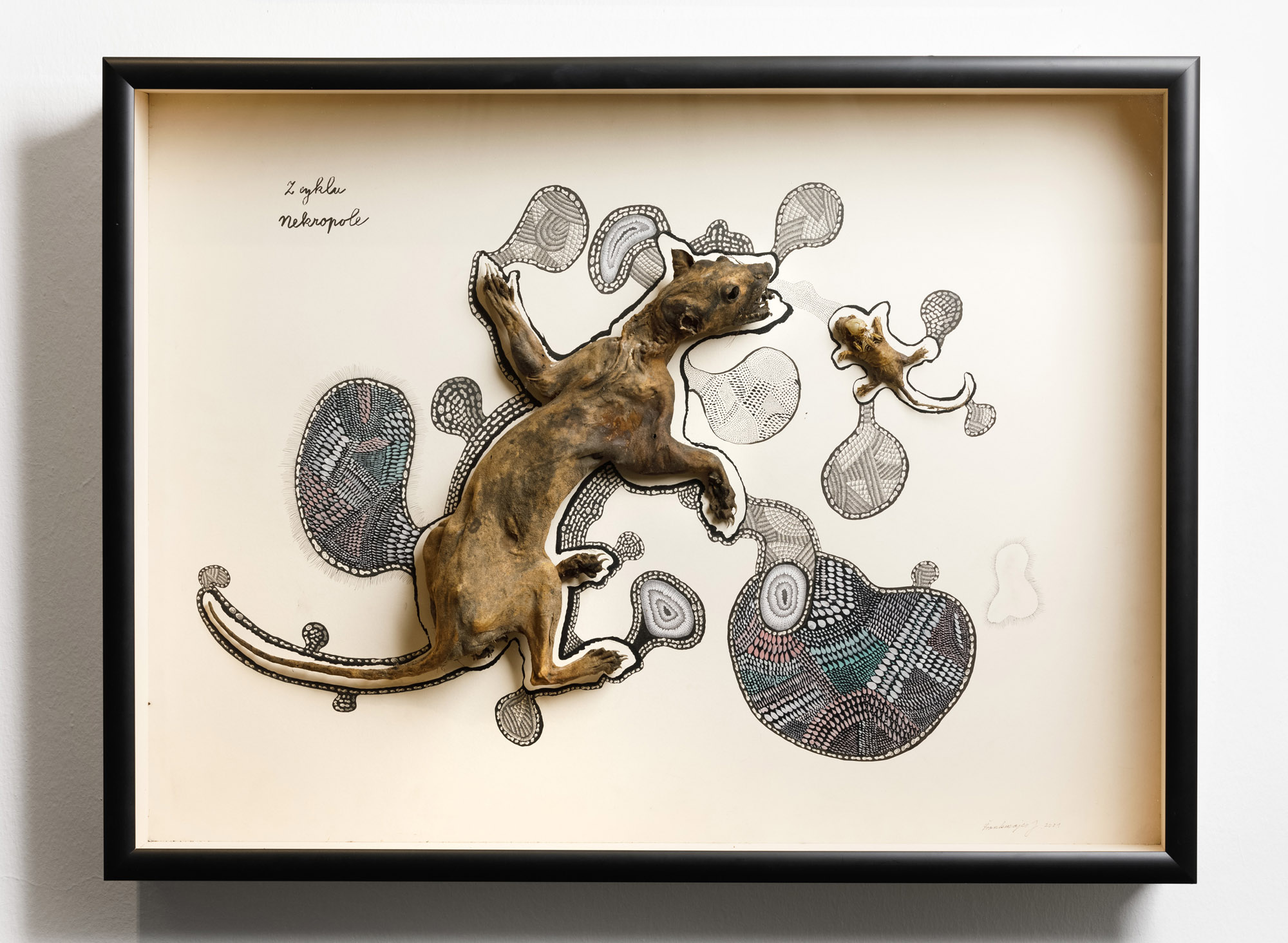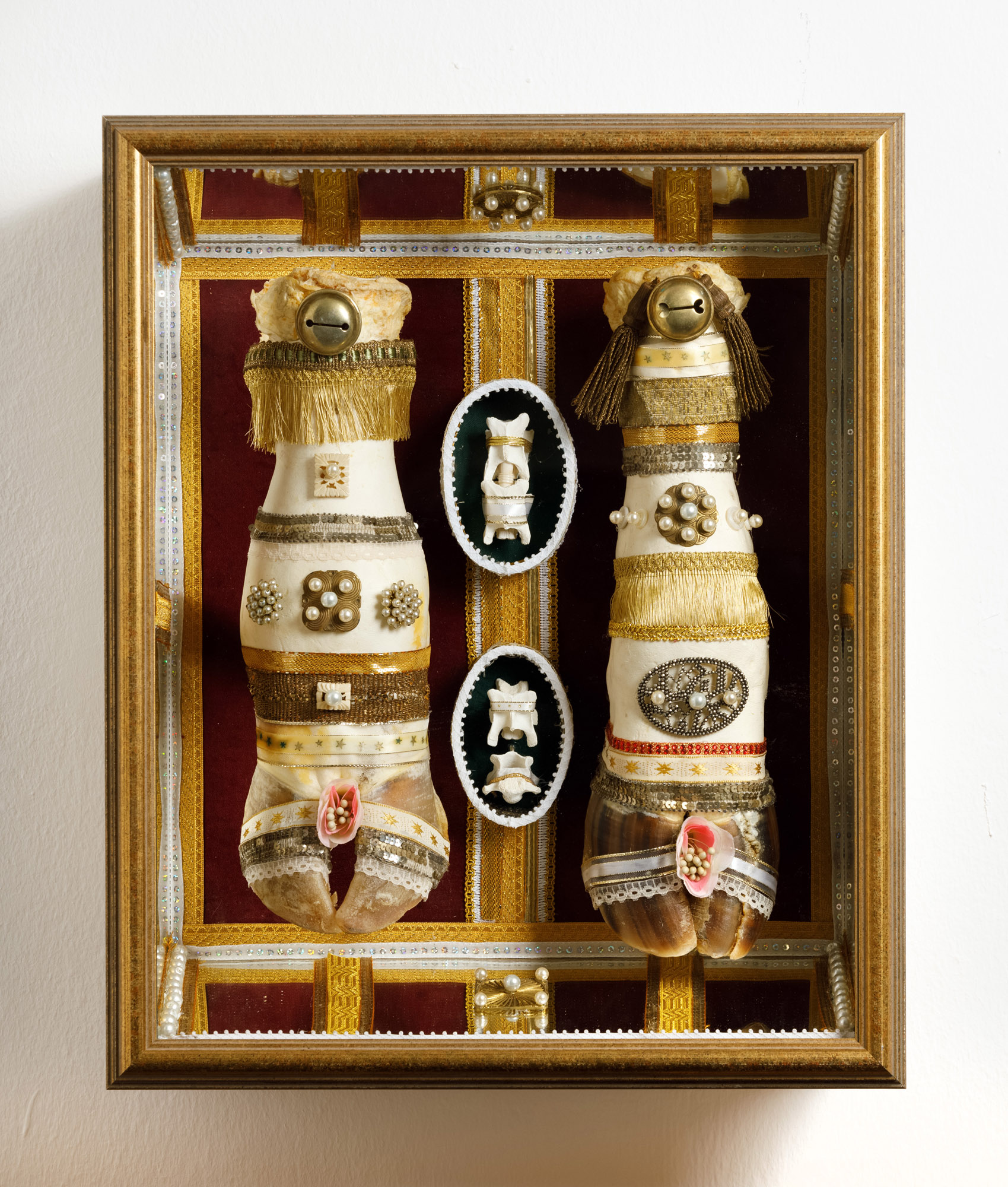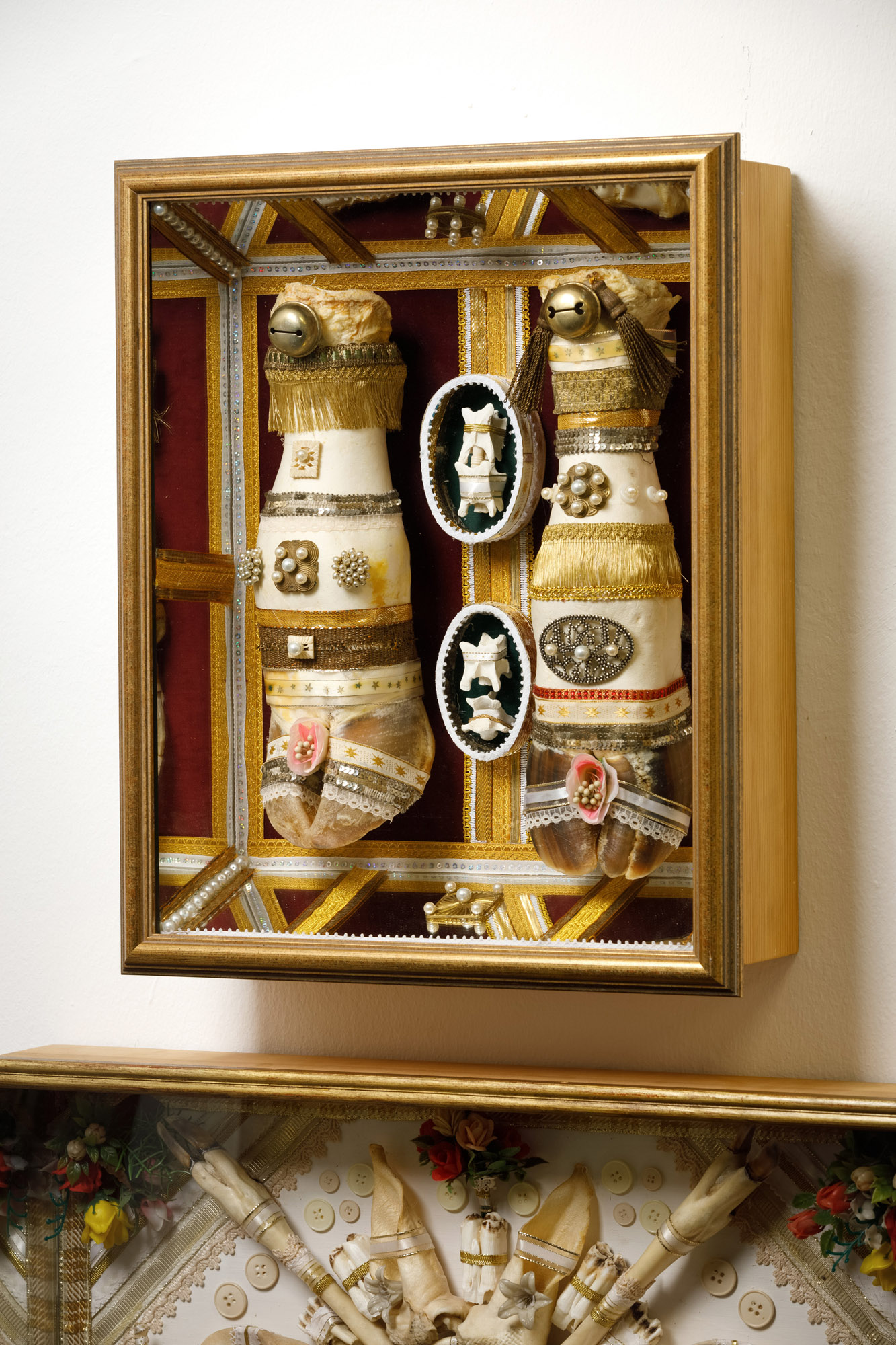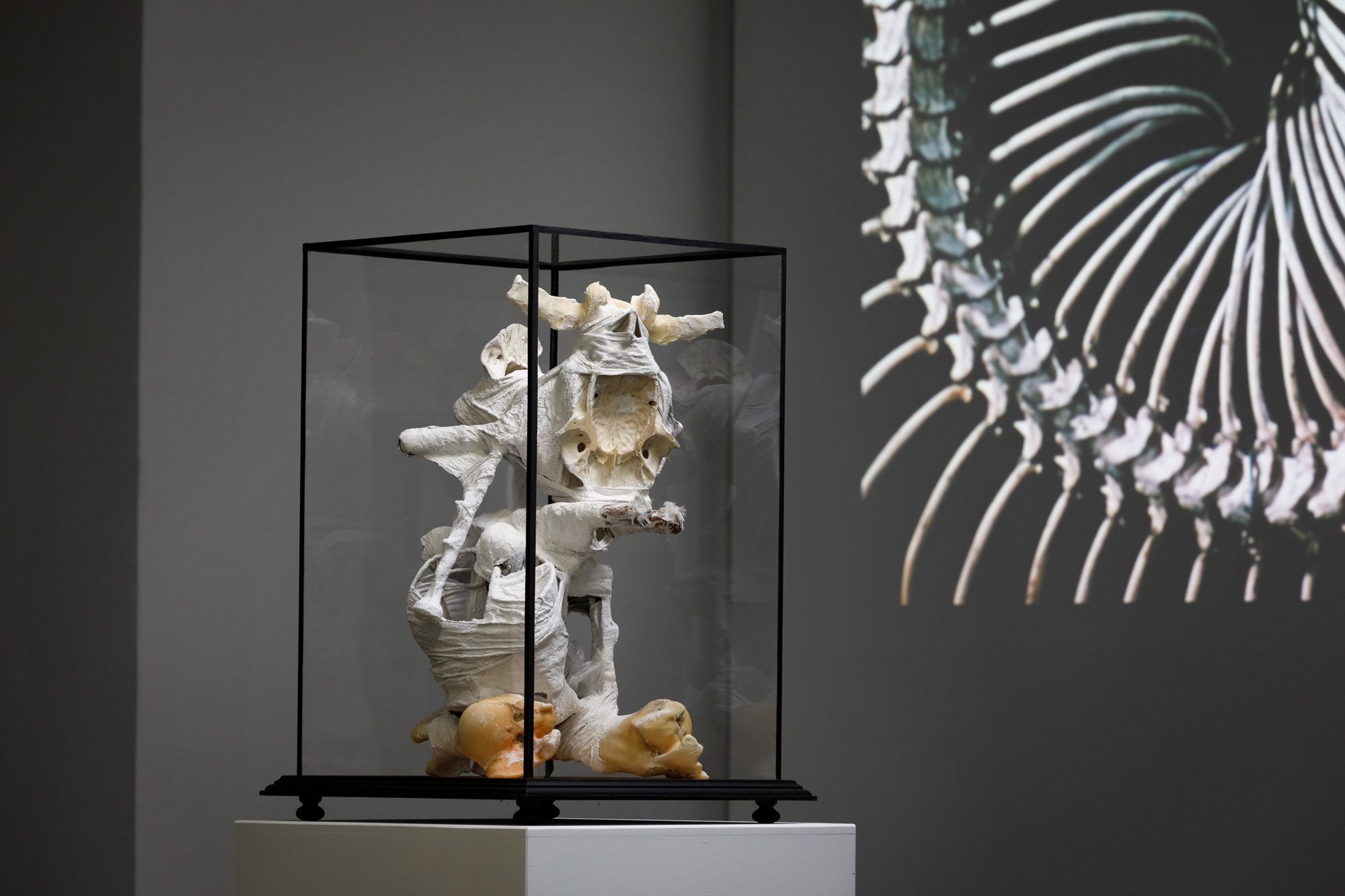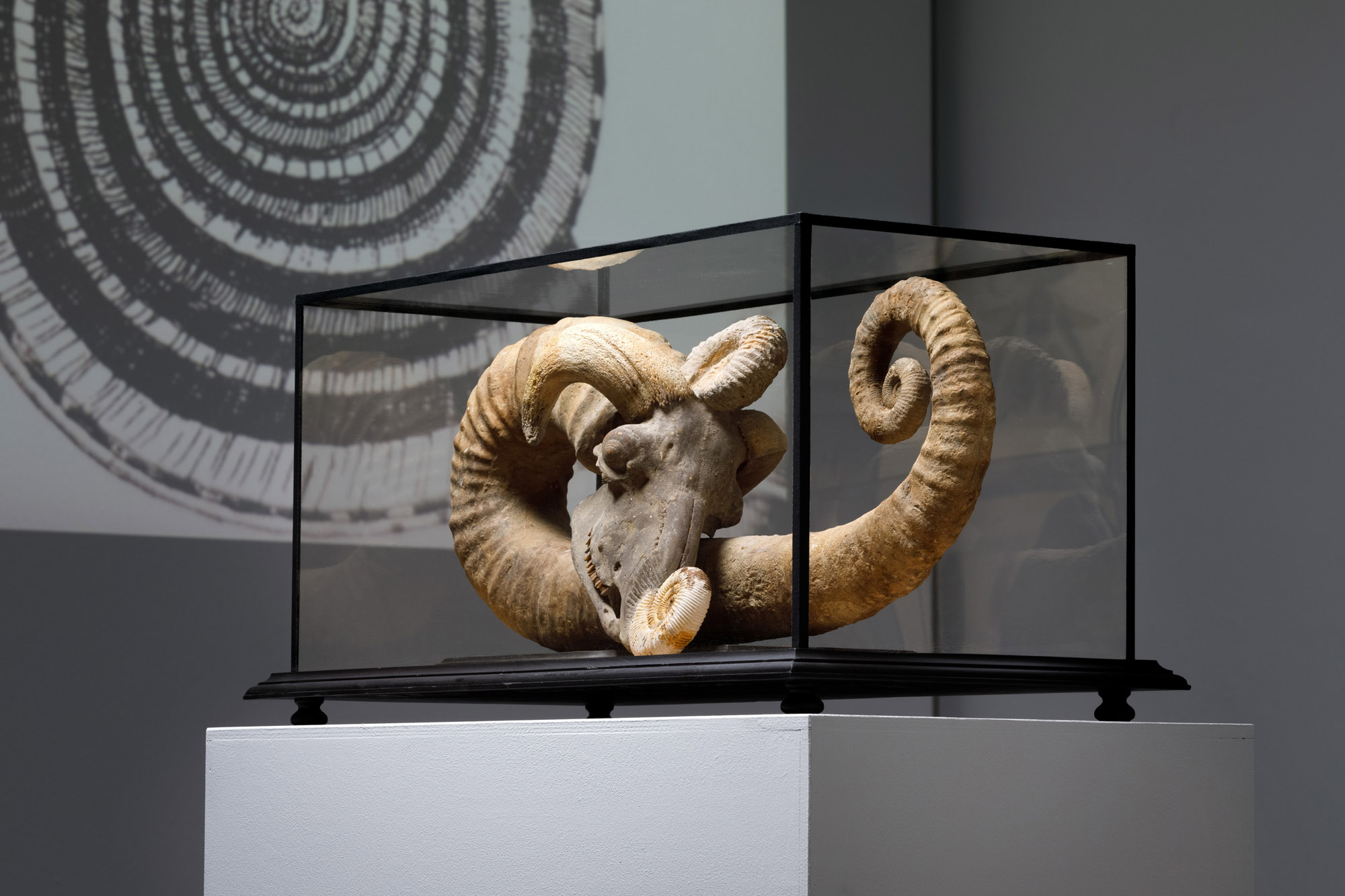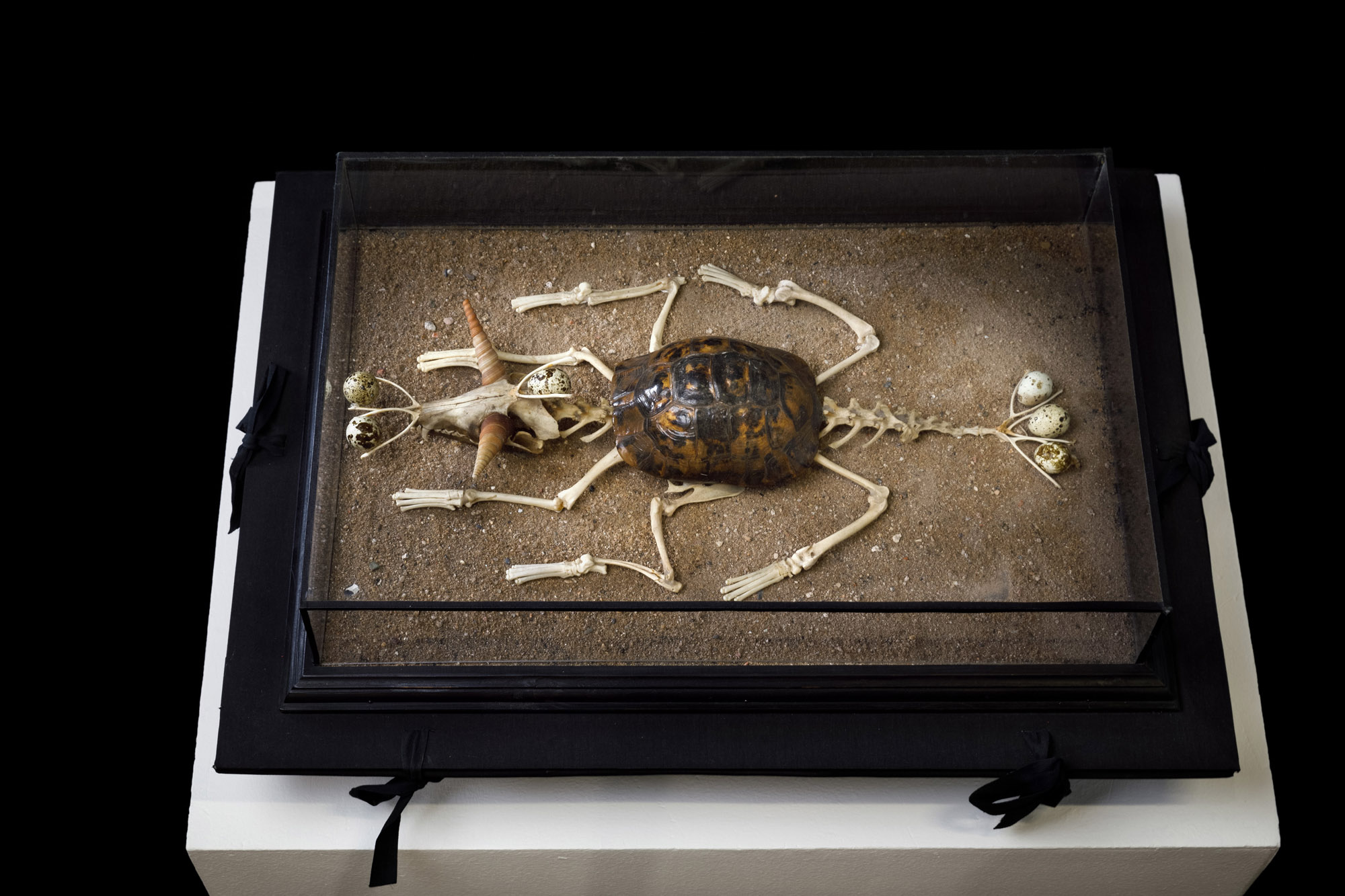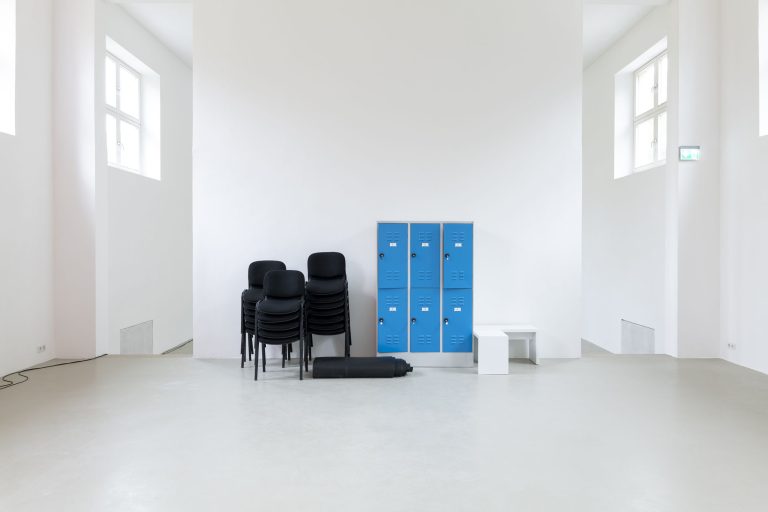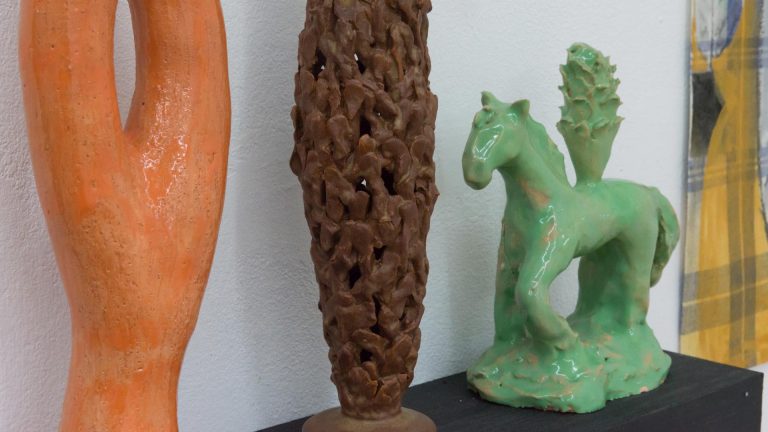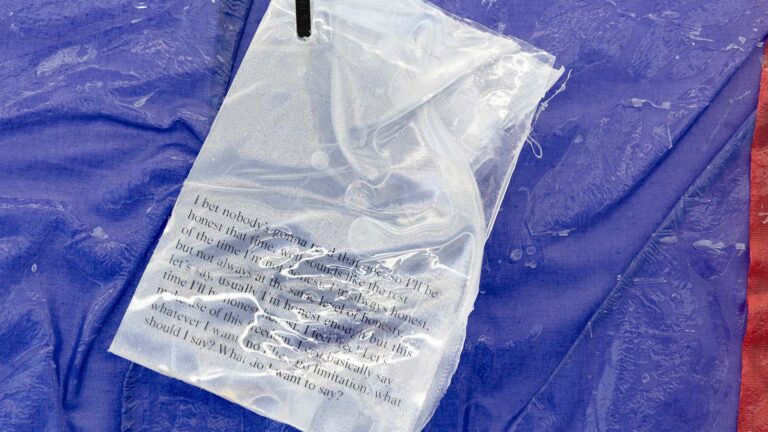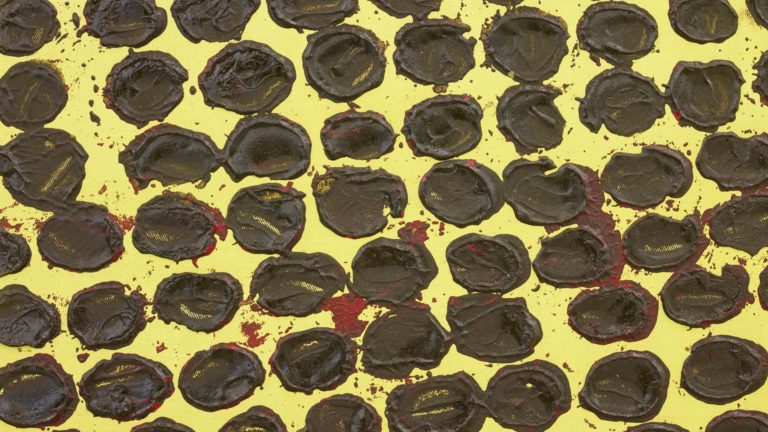Artist: Jan Švankmajer
Exhibition title: Unnatural Histories
Curated by: Jürgen Dehm
Venue: Kebbel-Villa, Schwandorf, Germany
Date: January 29 – March 19, 2023
Photography: Clemens Mayer / all images copyright and courtesy of the artist and Kebbel-Villa, Schwandorf
The Czech artist Jan Švankmajer (*1934 in Prague, lives in Prague and Horní Stankov, CZ) is internationally known for his surreal short films, which he has been making since the 1960s using the stop-motion technique. In the 1950s, he studied in Prague, first at the Academy of Arts and Crafts and then puppetry at the Academy of Performing Arts. His first artistic works were created in the 1950s, and to date, his oeuvre includes more than thirty film works as well as a large number of drawings, collages, prints, objects, assemblages, and poetic works. In the 1970s, some of his films displeased the political leadership of his native Czechoslovakia, then under Communist rule, and Švankmajer was banned from working there until 1980. However, it was his morbid, sometimes grotesque, but always humorous films that impressed renowned directors such as Monty Python’s Terry Gilliam or Tim Burton, who regularly cite Jan Švankmajer as a major influence in interviews.
The comprehensive exhibition at the Kebbel-Villa with more than fifty exhibits – objects, prints, assemblages, and films – is Švankmajer’s first show in the Upper Palatinate.
Its central theme is nature and the artistic reception of nature by Jan Švankmajer. With the experimental short film Historia Naturae, Suita from 1967 and his most recent, longer film, Kunstkamera from 2022, a meditation on Švankmajer’s Kunstkammer (cabinet of curiosities) at his country estate in Horní Staňkov, the range of the assembled works spans a period of more than 50 years.
In Historia Naturae, Suita, the artist unfolds his own interpretation of natural history in eight chapters, each of which is assigned a dance. His inspiration was the Prague Mannerism of the era of Rudolf II (1552-1612) with its displays of collections of objects of the most diverse origins in chambers of art and curiosities. Using the stop-motion technique, Švankmajer sets the insects and stuffed animals on display in motion, while the pieces of music make them dance. At the end of each chapter, a man eats a piece of beef. It is only in the eighth and last chapter, which deals with homo, the human being as such, that a skull is presented instead. But also the skull “devours” the piece of meat.
The fact that Švankmajer’s film aims at an allegorical reading becomes apparent already in the opening credits, which include a dedication to Guiseppe Arcimboldo (1526-1593). Arcimboldo was the court painter in the service of Emperor Rudolf II from 1575 to 1587. And between 1590 and 1591 he created a portrait of Rudolf II in the style of his proto-surrealist collages of flowers and fruits of all seasons. It is named after Vertumnus, the Etruscan-Roman god of change and plant growth. Švankmajer has explored the combinatorial principle of Arcimboldo’s portraits in many of his works. The inevitability of death in the face of life, however, is already made clear when in his The End of Arcimboldo (Autumn) caterpillars symbolically initiate the process of decomposition of the portrait.
Švankmajer’s vision of a comprehensive natural history based on his own ideas led to a utopian project in the early 1970s. The artist commented as follows: “I wanted to create an encyclopedia of a kind of alternative world, Švank-meyers Bilderlexikon. And so, I started to map out fictional flora and fauna, and invented forms of technology and architecture, ethnography and cartography. I got hold of old lexicons, price lists, ‘Brehm’ and geographical atlases and started cutting them and sticking them together according to my ideas. After two years of work this project remains just a fragment, because as time went by I discovered that it would be a lifetime’s task. I also realized that if the mystificatory encyclopedia was to be properly carried out, it would have to be printed, which seemed a completely impossible prospect in the 1970s.”
Along with Prague Mannerism, Švankmajer’s oeuvre is strongly influenced by a specific conception of Surrealism, not as an aesthetic but as a way of life. It focuses on the union of freedom, love, and poetry. In particular, the activities of the Czech Surrealist group around the literary theorist Vratislav Effenberger are closely linked to Švankmajer’s artistic practice and work. But French Surrealism is also present in Švankmajer’s work: It is evident in his mediumistic drawings – although the impetus for his involvement with this “automatism”, which gives the subconscious mind “free rein“ during the drawing process, was his visit to an Art Brut exhibition at the Gallery of the City of Prague in 1998. His wife Eva, whom Švankmajer had met during his studies, had already been involved in mediumistic drawing a few years before he was. According to the artist, his central sources for inspiration are dreams, eroticism, and childhood.
The exhibition is kindly supported by the German-Czech Future Fund.
We would especially like to thank ATHANOR.
Jan Švankmajer, Unnatural Histories, installation view 2023, Kebbel-Villa, Schwandorf
Jan Švankmajer, Unnatural Histories, installation view 2023, Kebbel-Villa, Schwandorf
Jan Švankmajer, Unnatural Histories, installation view 2023, Kebbel-Villa, Schwandorf
Jan Švankmajer, Unnatural Histories, installation view 2023, Kebbel-Villa, Schwandorf
Jan Švankmajer, Unnatural Histories, installation view 2023, Kebbel-Villa, Schwandorf
Jan Švankmajer, Unnatural Histories, installation view 2023, Kebbel-Villa, Schwandorf
Jan Švankmajer, Unnatural Histories, installation view 2023, Kebbel-Villa, Schwandorf
Jan Švankmajer, Unnatural Histories, installation view 2023, Kebbel-Villa, Schwandorf
Jan Švankmajer, The End of Arcimboldo (Autumn), 2002, installation view Unnatural Histories 2023, Kebbel-Villa, Schwandorf
Jan Švankmajer, Here Lived and Suffered E.Š. (Realised photography), 1994, installation view Unnatural Histories 2023, Kebbel-Villa, Schwandorf
Jan Švankmajer, Unnatural Histories, installation view 2023, Kebbel-Villa, Schwandorf
Jan Švankmajer, Unnatural Histories, installation view 2023, Kebbel-Villa, Schwandorf
Jan Švankmajer, Reliquary (Infantil Landscapes) (Detail), 2016, installation view Unnatural Histories 2023, Kebbel-Villa, Schwandorf
Jan Švankmajer, Reliquary (Infantil Landscapes) (Detail), 2016, installation view Unnatural Histories 2023, Kebbel-Villa, Schwandorf
Jan Švankmajer, Unnatural Histories, installation view 2023, Kebbel-Villa, Schwandorf
Jan Švankmajer, Erection (Detail), 2017, installation view Unnatural Histories 2023, Kebbel-Villa, Schwandorf
Jan Švankmajer, Unnatural Histories, installation view 2023, Kebbel-Villa, Schwandorf
Jan Švankmajer, Unnatural Histories, installation view 2023, Kebbel-Villa, Schwandorf
Jan Švankmajer, Unnatural Histories, installation view 2023, Kebbel-Villa, Schwandorf
Jan Švankmajer, Unnatural Histories, installation view 2023, Kebbel-Villa, Schwandorf
Jan Švankmajer, Suicidal Gesture, 1994, installation view Unnatural Histories 2023, Kebbel-Villa, Schwandorf
Jan Švankmajer, Unnatural Histories, installation view 2023, Kebbel-Villa, Schwandorf
Jan Švankmajer, From the Necropolis series, 2009, installation view Unnatural Histories 2023, Kebbel-Villa, Schwandorf
Jan Švankmajer, Unnatural Histories, installation view 2023, Kebbel-Villa, Schwandorf
Jan Švankmajer, Unnatural Histories, installation view 2023, Kebbel-Villa, Schwandorf
Jan Švankmajer, Reliquary with Cow’s Feets, 2016, installation view Unnatural Histories 2023, Kebbel-Villa, Schwandorf
Jan Švankmajer, Unnatural Histories, installation view 2023, Kebbel-Villa, Schwandorf
Jan Švankmajer, Reliquary of the Holy Relics, 2014, installation view Unnatural Histories 2023, Kebbel-Villa, Schwandorf
Jan Švankmajer, Mineralized Fox, 2014, installation view Unnatural Histories 2023, Kebbel-Villa, Schwandorf
Jan Švankmajer, Unnatural Histories, installation view 2023, Kebbel-Villa, Schwandorf
Jan Švankmajer, Unnatural Histories, installation view 2023, Kebbel-Villa, Schwandorf
Jan Švankmajer, Horned Ammonite, 2014, installation view Unnatural Histories 2023, Kebbel-Villa, Schwandorf
Jan Švankmajer, Boards for the Natural History Cycle of Etchings, 1977, installation view Unnatural Histories 2023, Kebbel-Villa, Schwandorf

